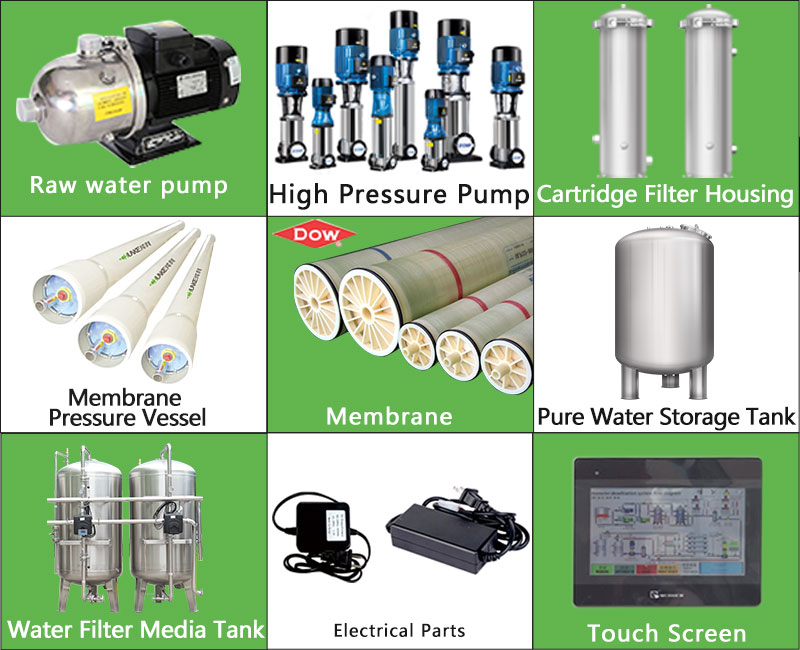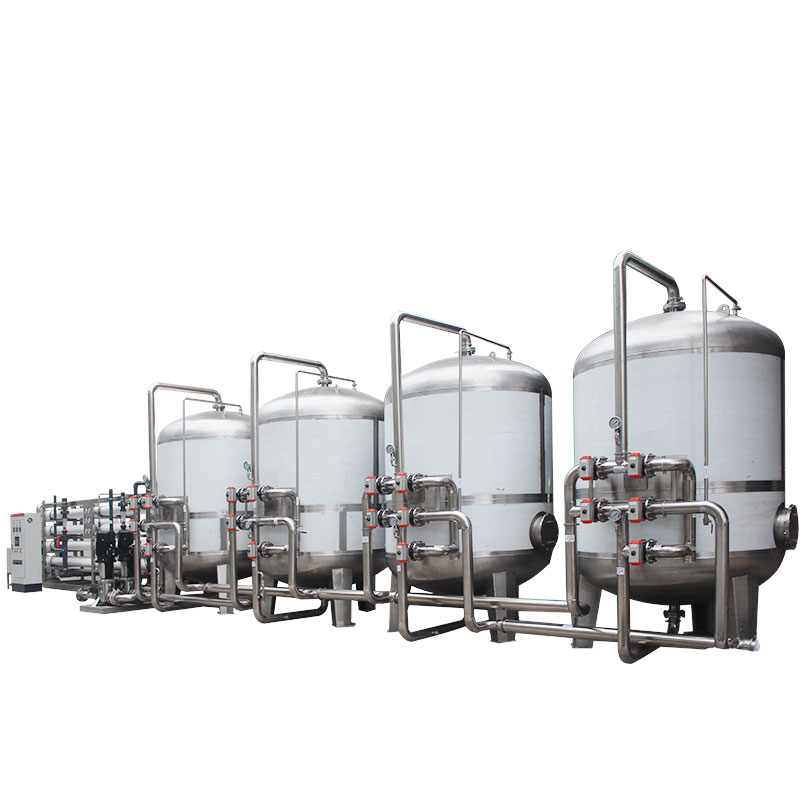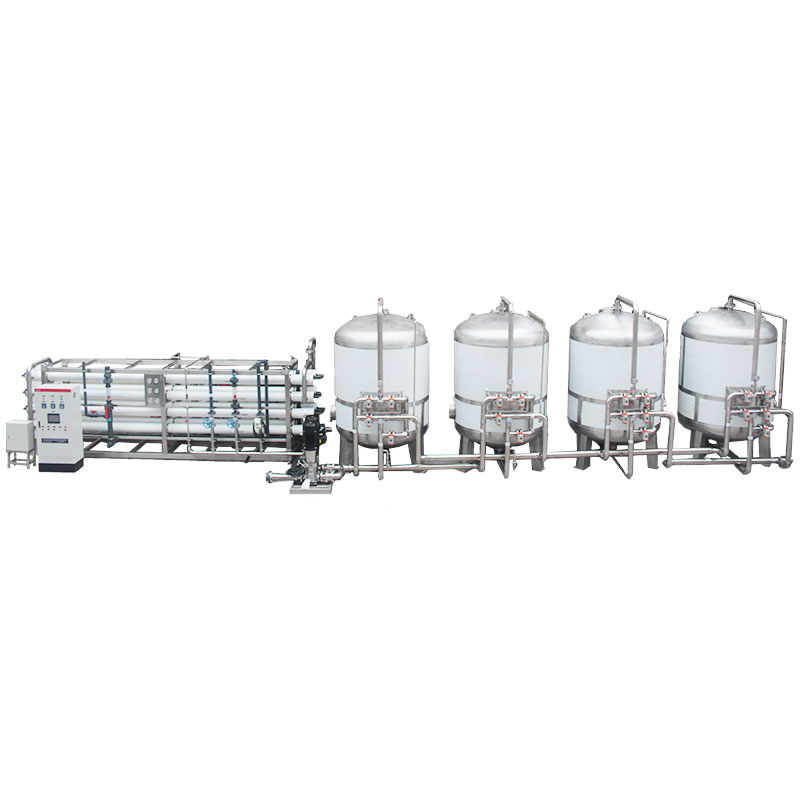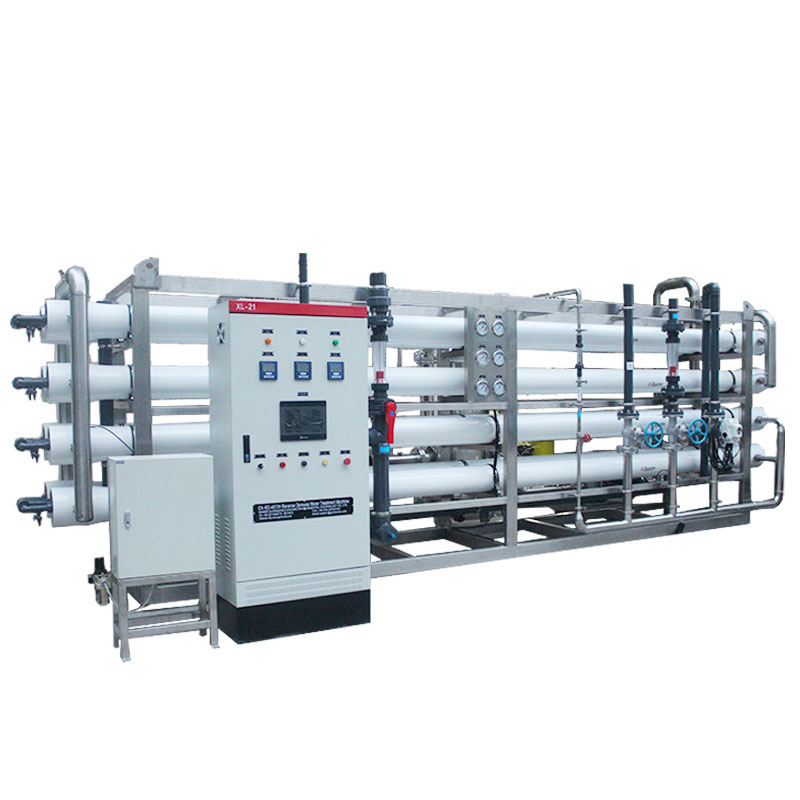How much does a 20tph reverse osmosis system cost?What is the core device?
The reverse osmosis system is an important water treatment equipment that can effectively purify a large amount of water resources and meet the demand for clean water in people's daily life and industrial production. For a reverse osmosis system that can process 20 tons of water per hour, the price is generally between US$40,000-70,000. The core device of the reverse osmosis system is a device that uses the pressure difference of a semipermeable membrane to purify brine.
How reverse osmosis systems work
Reverse osmosis systems utilize the properties of semipermeable membranes to purify water. When water passes through a semipermeable membrane, the micropores on the membrane allow water molecules to pass through, while larger solute molecules (such as salts, organic matter, etc.) are filtered out. By applying high pressure to reverse osmosis, water passes from a solution with a higher concentration through a semipermeable membrane to a solution with a lower concentration, thereby purifying and separating water.
Advantages of reverse osmosis systems
Reverse osmosis systems offer many advantages. First of all, it can remove soluble salts, glue, microorganisms, particulate matter and organic matter in the water and purify the water quality. Secondly, the reverse osmosis system has a simple process, easy operation and maintenance, and can stably provide high-quality water purification. In addition, the reverse osmosis system has low energy consumption, no pollution, and is environmentally friendly. It is one of the most ideal equipment in modern pure water, ultrapure water, and airspace water solutions.

How is the reverse osmosis system different from traditional water purification equipment?
Differences in technical principles
First of all, the technical principles of reverse osmosis systems are different from traditional water purification equipment. Traditional water purification equipment usually uses physical or chemical methods such as filtration, sedimentation, and sterilization to remove impurities and pollutants in water, while reverse osmosis systems purify and separate water through the pressure difference of a semipermeable membrane.
The difference in purification effect
Secondly, there are significant differences in purification effects between reverse osmosis systems and traditional water purification equipment. The reverse osmosis system can remove more types of pollutants, including microorganisms, organic matter, heavy metals, etc., purify the water more thoroughly, and produce higher quality water.
Differences in energy consumption and maintenance costs
In addition, there are differences in energy consumption and maintenance costs between reverse osmosis systems and traditional water purification equipment. Although the reverse osmosis system has low energy consumption, the maintenance cost of its equipment and filter elements is high. The filter elements and membrane elements need to be replaced regularly, which increases the use cost and maintenance difficulty.

How does a reverse osmosis system achieve efficient water treatment?
The reverse osmosis system achieves efficient water treatment through the core reverse osmosis membrane component, which can remove various impurities in the water and provide clean, pure drinking water and industrial water. Its characteristics of high efficiency, energy saving and environmental protection make it one of the indispensable equipment in the field of modern water treatment.
First of all, the reverse osmosis system can efficiently remove impurities such as soluble salts, colloids, microorganisms, particulate matter and organic matter in water. Through the action of the reverse osmosis membrane, the system can remove more than 97% of soluble salts and more than 99% of other impurities, thereby purifying and purifying water.
Secondly, the reverse osmosis system has significant features such as low energy consumption, no pollution, simple process, high effluent quality, and easy operation and maintenance. Compared with traditional water treatment methods, the reverse osmosis system does not require the addition of chemicals, has no secondary pollution, has low energy consumption and is easy to operate. It is very suitable for pure water, ultrapure water and airspace water treatment solutions.

How are osmotic systems used in homes and industries?
Home application
In homes, reverse osmosis systems are primarily used to provide clean, filtered drinking water. It can remove impurities and pollutants from tap water, provide high-quality drinking water, and protect the health of family members.
Industrial applications
In the industrial field, reverse osmosis systems are widely used for water treatment and purification in various production processes. For example, electronics, chemicals, pharmaceuticals and other industries all require a large amount of pure water for production processes. The reverse osmosis system can effectively provide the required pure water resources to ensure the smooth progress of production.

As an important water treatment equipment, the reverse osmosis system plays an important role in purifying water quality, providing high-quality drinking water, and ensuring production water resources. The price of a reverse osmosis system that can process 20 tons of water per hour is generally between US$40,000 and US$70,000. Its core device is a device that uses the pressure difference of a semipermeable membrane to purify brine.
Compared with traditional water purification equipment, reverse osmosis systems have differences in technical principles, purification effects, energy consumption and maintenance costs. In both households and industries, reverse osmosis systems are widely used to provide people with clean, pure water resources and promote the development of health and production.






